

SRI LANKA HOLIDAYS: King Parakrama Bahu the Great (1164-1196 AD) Part 1
Tour the beautiful isalnd of Sri Lanka with Riolta Sri Lanka Holidays, Sri Lanka.
King Parakrama Bahu the Great was born in Badulla of Central Highlands of Sri Lanka during an uncertain chapter of the great history of Lanka. With the death of great King Vijahabahu, Sri Lanka had a period of disaster. It was a period which called for a hero. Prince Parakrama, grandson of King Vijayabahu, nurtured in Ruhuna, redolent of Sinhalese tradition rose to the occasion. At once a scholar & soldier, he had been stirred by chivalry of Prince Gamini of Ruhuna who went on to become King Duttha Gamini & King Duttha Gamini's nephew King Wattha Gamini Abhaya (Valagambahu) & Prince Kirti of Ruhuna who went on to become King Vijayabahu
Born with greatness, the indomitable prince wasn’t content with the prospect of ruling a petty principality in Ruhuna. Well trained in warfare & immaculately steeped in History, Literature & Buddhism, the prince was at once a master & blaster. He laid out a network of espionage throughout the island: “Fifth Columnists”, disguised as snake-charmers, peddlers & pilgrims were sent into the villages & cities testing the waters. He erected barricades, mounted batteries & placed battalions of well-drilled soldiers at numerous gateways to Ruhuna all the way from Adam’s Peak in the Central Highlands to the Southern sea coast.
In order to sustain a prolonged war, he began to support the vast scale irrigation & heaped up a chain of enormous stores of grain. Old tanks were renovated; new tanks were built. Cultivated lands were supported & uncultivated lands were converted to large tracts of rice fields. Sings of a great king were in the making. A great army of well-trained soldiers was built up. A war strategy was drawn up was carried out to the point of an arrow as well as to the letter. The spies stationed at gateways made the access to fortified cities of provincial rulers vulnerable to the incoming armies of Parakrama. Each & every onslaught was efficient & swift. Parakrama’s generals won battle after battle on their march northward from the southern province of Ruhuna; one by one fortresses of the provincial chieftains fell to the unassailable onslaught.
The scope of the celebrations in the kingdom of Polonnaruwa wouldn’t take a back seat to the scale of the great war in the island of Sri Lanka. Here was a king who was above his time: he was well versed in the machinery of propaganda to the boot in addition to the art of celebrations. Parakrama arrived in the great kingdom of Polonnaruwa as sole king of Sri Lanka.
Quote
Culavamsa
At a favourable moment & under a lucky star the Ruler (now) without rivals held the happy festival of the coronation. The loud noise of the diverse kind of drums was then terrible as the raging of the ocean when lashed by the storm wind of the destruction of the world. Elephants equipped with gilded armour made the royal road look as if it were traversed by lightening-flashing cloud mountains. The whole town, in which the colours of the horses gave rise, as it were to waves, was in agitation like the ocean. By the variegated umbrellas & wreaths & the rows of golden flags the heavens were hid as it were, on all sides. Garments were shaken & fingers snapped the inhabitants of the town sent forth the cry: Live (O King)! Live! Covered with arches of bananas & thickly studded with jars & wreaths the whole universe consisted of a mass of festivals. Songs of praise were hared hymned by many hundreds of singers & the smoke of (kindled) aloe wood filled the firmament.
Unquote Culavamsa being the more recent part to the Mahavamsa translated by Wilhelm Geiger 1929, AES reprint 81-206-0430-X & 81-206-0431-8
It was now Parakrama’s task as king to arrest the decline of the faith, law & order & mount a resurrection of the island. He gave orders that he taxes should be fairly laid upon the people without being a burden to them. The great families that had been ruined & had fled from the oppression of the former kings, were called back & restored to their former positions. The poor were supported; hospitals were built, physicians were appointed to attend to the sick. Order was established everywhere & the civic laws were enforced & administrative regulations were set up. Laws were obeyed to such an extent, that even a damsel adorned with precious jewellery could travel anywhere in the island on her own & no one would dare so much as to wink at her.
A part of the great vision of the king was to make Buddhism once again the prime driving force of the Sinhalese. He had been thoroughly taught the laws & the teachings of his religion. But the decline of Buddhism during past few decades was to cause much pained to the great king & he set upon resurrecting the faith.
The three chief Orders, or societies, of priests –those belonging to Maha Vihara, the Abhayagiri vihara & the Jetavana vihara –had for eight hundred years been separated from one another. The king took left no stone unturned to unite the three monasteries. Then, as the people once again began to pay more attention to their religion, viharas were built or repaired, images of the Buddha were erected, & new preaching halls provided in numerous places.
Parakrama continued to do the throughout his whole kingdom of Sri Lanka what he had done before in Ruhuna for the cultivation of rice. Tanks-over a thousand of them-were repaired or newly built to provide an unfailing supply of water. These tanks were joined by canals to rivers & large streams making networks of irrigation. Minneriya, Kantalai & others were connected by a canal a hundred miles long, starting from the Amban Ganga at Ellahara near Matale.
His carrier is a fit theme for an epic poem,” says Sir Ponnambalam Arunchalam in his Sketches of Ceylon History, & ask: ‘When will a Sinhalese Valmiki arise to sing the story of Parakrama’s glorious life & fix it among the imperishable traditions of the race?”









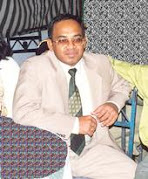













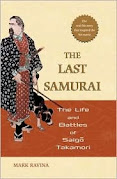


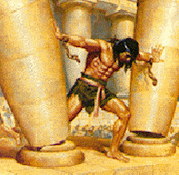









































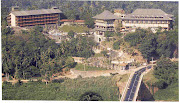








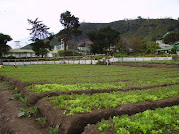














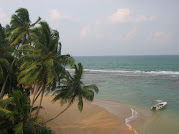












0 Comments:
Post a Comment